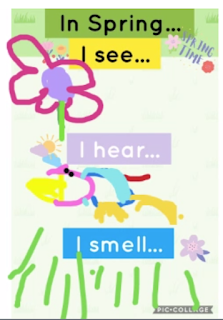Distance Learning Begins
On Sunday, March 15, Minnesota governor Tim Walz, closed public schools so that educators could plan for long-term plans for the continuity of education. We had approximately two weeks to completely revolutionize the way we teach and the way students learn.
Collaborative Backwards Planning As Usual
Although the way we "do school" certainly looks different, the philosophies at the core of our teaching and learning remain the same.
One of these approaches to teaching that hasn't changed is the way in which we collaboratively plan for instruction with the end in mind; first starting with the essential learning then planning for how students show successful mastery and then giving feedback framed in terms of those criteria.
Research for Better Teaching, Inc. published the graphic below that does a nice job of visually representing this chain.
One of these approaches to teaching that hasn't changed is the way in which we collaboratively plan for instruction with the end in mind; first starting with the essential learning then planning for how students show successful mastery and then giving feedback framed in terms of those criteria.
Research for Better Teaching, Inc. published the graphic below that does a nice job of visually representing this chain.
retrieved from https://www.rbteach.com/products-resources/downloads/all on April 6, 2020.
Questions To Consider When Collaboratively Planning
1. Communicate Objectives
- What do we want students to understand (concepts), know (knowledge) or be able to do (skills)?
- These essential learnings can come from central ideas, lines of inquiry and state standards.
- These essential learnings can be communicated in many ways (not just as "I Can" statements). In a programme that values inquiry, questions can be an effective way to spark curiosity while communicating to students the learning target.
2. Select Performance or Product
- How will students demonstrate they understand, know or are able to do what we have identified as essential?
- How can we set up loose enough parameters that students' can still exercise their creativity and voice in how they choose to demonstrate proficiency?
3. Develop Criteria
- What does success look like?
- Our team should decide on loose enough criteria so that student responses can be varied, create and unique, yet specific enough to help us frame the feedback we give students.
4. Give Feedback
- Using the previously developed success criteria, communicate to students how they hit the mark or help them to understand what they're missing and how they can improve.
What does this look like in practice?
- Conceptual understanding: Based on the current unit of inquiry's central idea, teachers want the students to understand that senses are used for exploring and staying safe.
2. Select Performance or Product
- Performance Assessment: Students will use their senses to explore during a spring nature walk and identify what they see, hear and smell.
3. Develop Criteria
- Does the student's response make sense for what you'd see, hear, and smell outside in Minnesota in springtime?
- Does the student include ideas similar to the ones in the read-aloud that was a part of this learning experience?
4. Give Feedback
Distance Learning's Unintended Positive Consequences
Although distance learning has some limitations, the format promises to enhance collaboration, personalization and the quality and the specificity of feedback we give to students.





I will prefer this blog because it has much more informative stuff. Visit Skill Development for more related information and knowledge.
ReplyDeleteHello there! This post couldn't be written any better! Reading through this post reminds me of my good old room mate! He always kept talking about this. I will forward this write-up to him. Fairly certain he will have a good read. Many thanks for sharing!economics tutor
ReplyDeleteThanks For sharing this wonderful blog.
ReplyDeleteZiyyara is a platform which provides IB PYP Tuition and pyp training or call +91-9654271931 for more information.